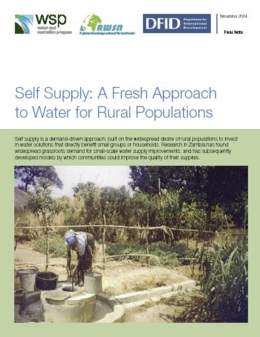|
 Self Supply: A Fresh Approach to Water for Rural Population Self Supply: A Fresh Approach to Water for Rural PopulationPenerbit: Water and sanitation program (WSP), Nov 2004 Every year, thousands of rural householders and small groups invest in traditionally dug wells and scoopholes to provide convenient water supplies which they manage and maintain themselves. These water sources number over a million in Africa alone. Many rural people value these sources for their convenience, taste, productive use and, most importantly, the sense of ownership and control bestowed. However, policymakers tend to regard them as a liability to be replaced rather than improved or augmented, and rural water supply strategies continue to concentrate on communal supplies for groups of 200 to 500 people. Research in Zambia has found widespread grass-roots demand for smallscale water supply improvements1, and has subsequently developed models by which communities could improve the quality of their supplies. A project, funded by the UK Department for International Development(DFID) and implemented in partnership with the government of Zambia, now incorporates these models into national rural water supply strategy guidelines as an option alongside conventional approaches. Self supply builds on the widespread desire of the rural poor to invest in solutions that bene.t their small group or household directly, rather than as members of what are often scattered or discordant communities. It’s components include improved availability of water from an increased number of supplies (such as traditional sources and rainwater harvesting); improved water quality (through source protection, improved water collection and storage practices, and household water treatment); and, improved water lifting for productive use. Self supply offers choice of technology, progressive upgrading, and replicability with little (if any) dependence on outside funds, enabling rapid and signi.cant improvements to the lives of millions of people. lihat selengkapnya Post Date : 14 April 2005 |